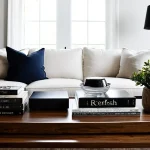Key Principles for Seamless Indoor-Outdoor Flow in UK Residences
Creating a seamless transition between indoor and outdoor spaces is essential for modern UK home design. The core principle involves a fluid connection that blurs boundaries, enhancing living space while embracing the outdoors. Achieving this requires careful planning of spatial relationships, material choices, and architectural features.
The UK’s often unpredictable climate poses challenges such as frequent rain and variable temperatures. To overcome these, designs must incorporate weatherproof materials and sheltered areas while allowing easy access to the garden. Large glazing elements and well-positioned openings promote natural light and ventilation without compromising comfort.
In parallel : How Can You Revamp Your Home Decor Without Breaking the Bank?
Local architectural styles must also be respected to maintain harmony with the surrounding environment. For example, a traditional Georgian home might use sash windows and subtle door frames, while a contemporary build can feature expansive glass sliding doors. This sensitivity ensures the indoor-outdoor flow feels authentic and integrated into its context.
By focusing on these design principles, homeowners can enjoy enhanced functionality, increased property value, and a natural connection to their outdoor spaces throughout the year.
Have you seen this : How Can Smart Technologies Upgrade Modern UK Home Interiors?
Effective Layout Strategies
Achieving a strong indoor-outdoor connection begins with smart open-plan layouts. Positioning living areas like kitchens and lounges adjacent to garden-facing walls allows for large glazed openings, naturally extending internal spaces outward. For example, placing family rooms beside patios invites effortless movement, enriching the overall experience.
Thoughtful floor plan ideas enhance the seamless transition. Circulation paths should flow intuitively—from inside to outside—without awkward barriers or narrow corridors. This encourages daily use of outdoor spaces and improves the property’s functionality in all seasons, addressing common challenges of the UK climate.
Using spaces such as hallways or utility rooms as buffers can bridge temperature differences, maintaining comfort while preserving openness. Incorporating multi-purpose rooms facing gardens boosts adaptability, allowing homeowners to enjoy views during colder months and easy access in summer.
In summary, continuous sightlines, strategic room placement, and clear movement patterns anchor effective layout strategies. These principles help overcome UK’s climate unpredictability and respect local home design, enhancing the natural rhythm between indoor and outdoor areas.
Choosing the Right Doors and Materials
Selecting the right doors is crucial for achieving a seamless transition in UK home design. Bifold doors open fully, folding to one side and maximising the opening between indoor and outdoor spaces. This creates an expansive connection, ideal for living rooms adjoining terraces or gardens. However, bifold doors require sturdy frames and precise installation to maintain weatherproofing, especially important in the UK’s damp climate. Alternatively, sliding glass doors offer smooth operation with fewer moving parts and often better insulation. They provide panoramic views with less structural intrusion but do not open as wide as bifold doors.
Material choice complements door selection. Using weatherproof materials such as treated hardwood, aluminium, or uPVC frames ensures durability and resistance to moisture. Flooring transitions benefit from materials like natural stone or composite decking, which handle outdoor exposure while appearing cohesive inside. Walls adjacent to openings should incorporate moisture-resistant finishes and thermal insulation to reduce heat loss.
Essential weatherproofing features include sealed door frames, water-resistant thresholds, and drainage consideration around openings. These elements safeguard the indoor-outdoor flow against the UK’s unpredictable weather, sustaining comfort and usability throughout the year.
Weatherproofing and Climate Adaptation
In the UK, effective weatherproofing solutions are essential to maintain a seamless indoor-outdoor flow despite frequent rain and fluctuating temperatures. Durable materials like treated hardwood, aluminium, and high-quality composites resist moisture and prevent deterioration. These materials safeguard structural elements and finishes, ensuring longevity in tough weather conditions.
Covered outdoor areas, such as verandas or retractable awnings, provide shelter from the elements, extending usability throughout the year. Incorporating heating options like infrared lamps or outdoor fireplaces enhances comfort during cooler months, encouraging regular use of garden spaces even in less favourable weather.
Climatic challenges also demand thoughtful design details: well-sealed door frames, water-resistant thresholds, and efficient drainage systems minimise water ingress. Thermal insulation around openings reduces heat loss, maintaining interior warmth while preserving openness.
By combining robust materials with clever climate adaptation strategies, homeowners achieve functional and enjoyable indoor-outdoor connections. This approach respects UK weather realities and supports year-round living that harmonises inside comfort with outdoor appeal—key to any UK home design focused on a genuine seamless transition.
Inspiring Real-Life UK Examples
Real-life case studies demonstrate how thoughtful design creates a flawless indoor-outdoor transformation in various UK home contexts. A modern family home with garden connection might feature extensive glazing and bifold doors that fully open, dissolving the boundary between lounge and patio. This encourages frequent use of outdoor space and enhances natural light. The layout maximises indoor-outdoor flow by aligning interior zones directly with landscaped gardens.
In a suburban semi-detached makeover, a rear extension with sliding glass doors offers a practical yet elegant solution. The design respects local architecture while introducing contemporary openness, linking kitchen and dining areas to a rear terrace. This seamless transition successfully balances privacy and connection, vital for UK homes.
An example of a city terrace extension with courtyard access highlights how clever use of compact outdoor areas can enhance living experience. Incorporating retractable doors and weatherproof materials enables year-round use despite typical UK weather challenges. These projects inspire homeowners seeking to enhance property value and enjoyment by integrating inside and outside effectively. Each case underscores the importance of tailored solutions to climate, style, and lifestyle for authentic UK home design indoor-outdoor connections.
Landscaping Ideas for Blending Indoors and Outdoors
Bringing a seamless transition between indoor and outdoor areas hinges on smart landscaping tips that enhance both function and form. Thoughtfully designed patios and terraces create natural extensions of the home, visually connecting living spaces with the garden. Using level flooring materials at thresholds can minimise barriers, encouraging effortless movement and reinforcing the indoor-outdoor flow.
Zoning outdoor spaces helps balance privacy and socialising. For example, a dining terrace adjacent to the kitchen opens for al fresco meals, while a quieter garden nook provides retreat. Selecting plants suited to the UK climate, such as evergreen shrubs or seasonal blooms, ensures year-round greenery and interest.
Outdoor lighting is another crucial element. Installing layered lighting—ambient, task, and accent—extends usability into evenings and highlights key features like pathways or architectural details. Smoothly integrating lighting fixtures with the garden design supports safety and atmosphere without detracting from the natural appeal.
Ultimately, blending indoors and outdoors through smart garden design enhances the home’s living space while respecting the UK’s weather and architectural context. Homeowners benefit from flexible, inviting environments that maximise outdoor enjoyment.







